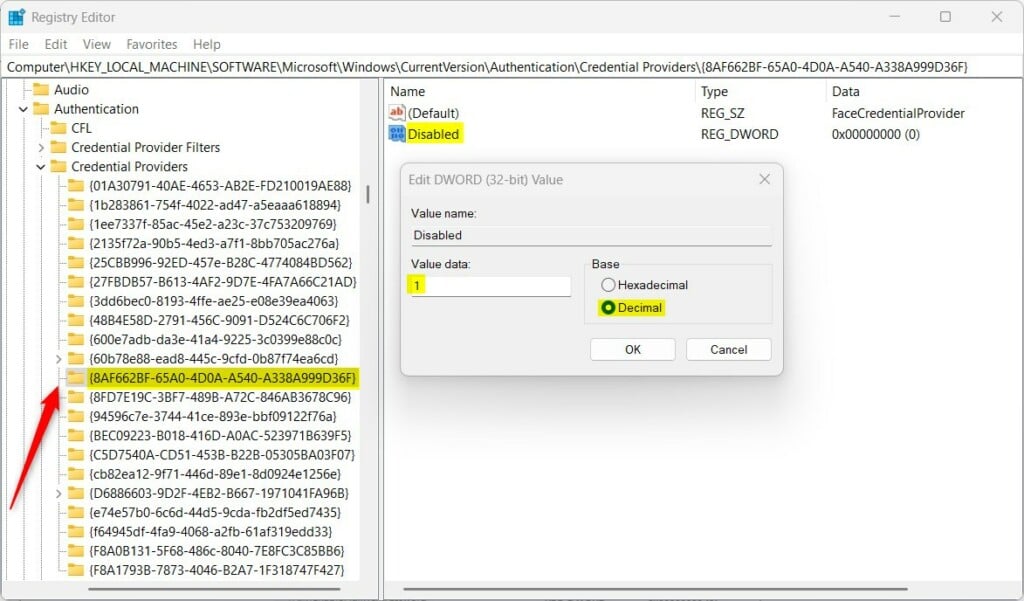This article explains how to add or remove the ability to use Windows Hello facial recognition as a sign-in option and UAC credential provider in Windows 11.
Windows provides multiple options one can use to sign into a device. A more secure way to sign into Windows is to use Windows Hello. It provides a more personal and secure way to sign into Windows using a PIN, facial recognition, fingerprint, passkey, and more.
Users can also use a security key, a hardware device – usually a little USB key – that you can use instead of your username and password to sign in on the web.
A less secure way is to use a password.
Although Windows Hello facial recognition technology is more secure, it may not be compatible in all scenarios. Some environments can remove it as a sign-in option and UAC credential provider. This will disable the ability to use facial recognition to sign in to Windows on the Sign-in screen and a UAC credential provider.
For several reasons, someone might want to add or remove facial recognition as a sign-in option in Windows. First, facial recognition can be a more secure and convenient way to sign in to your device. By using Windows Hello facial recognition, you can quickly and easily log in to your device without entering your password every time.
However, there may be situations where facial recognition is not compatible or practical. For example, facial recognition may not work reliably if you wear a mask or other facial covering that obscures your face. Additionally, some organizations or environments may have security policies that prohibit using facial recognition as a sign-in option. In these cases, it may be necessary to remove facial recognition as a sign-in option and use another method, such as a password or a security key, to log in to your device.
How to add or remove Facial Recognition as a Sign-in option
As mentioned above, if you don’t want users using their faces to sign into Windows or want to standardize the Windows sign-in process, you can remove the ability to use facial recognition as a sign-in option and UAC credential provider.
Here’s how to do it.
First, open Windows Registry Editor.
Then, navigate to the registry key below.
Computer\HKEY_LOCAL_MACHINE\SOFTWARE\Microsoft\Windows\CurrentVersion\Authentication\Credential Providers\{8AF662BF-65A0-4D0A-A540-A338A999D36F}
Next, double-click the Disabled (REG_DWORD) name on the Explorer key’s right pane to open it. Then, enter a value 1 to disable users using facial recognition in Windows.
To allow all users to use facial recognition, simply delete the Disabled item.
If you do not see the ‘Disabled ‘item, right-click a blank area and create a new DWORD (32-bit) Value. Then, enter the name ‘Disabled ‘.

You may have to restart your computer for the changes to apply.
Reference:
Conclusion:
- Windows Hello facial recognition provides a secure and convenient sign-in option for Windows users, allowing quick and easy access to devices without entering a password every time.
- However, compatibility or practicality issues may arise in certain scenarios, such as using facial coverings that obscure recognition or conforming to organizational security policies.
- Following the steps outlined in this article, users can easily add or remove the ability to use Windows Hello facial recognition as a sign-in option and UAC credential provider, providing flexibility and control over the Windows sign-in process.
- Users are encouraged to leave feedback or additional insights in the comments section to enhance the information provided in this article.

Leave a Reply Cancel reply